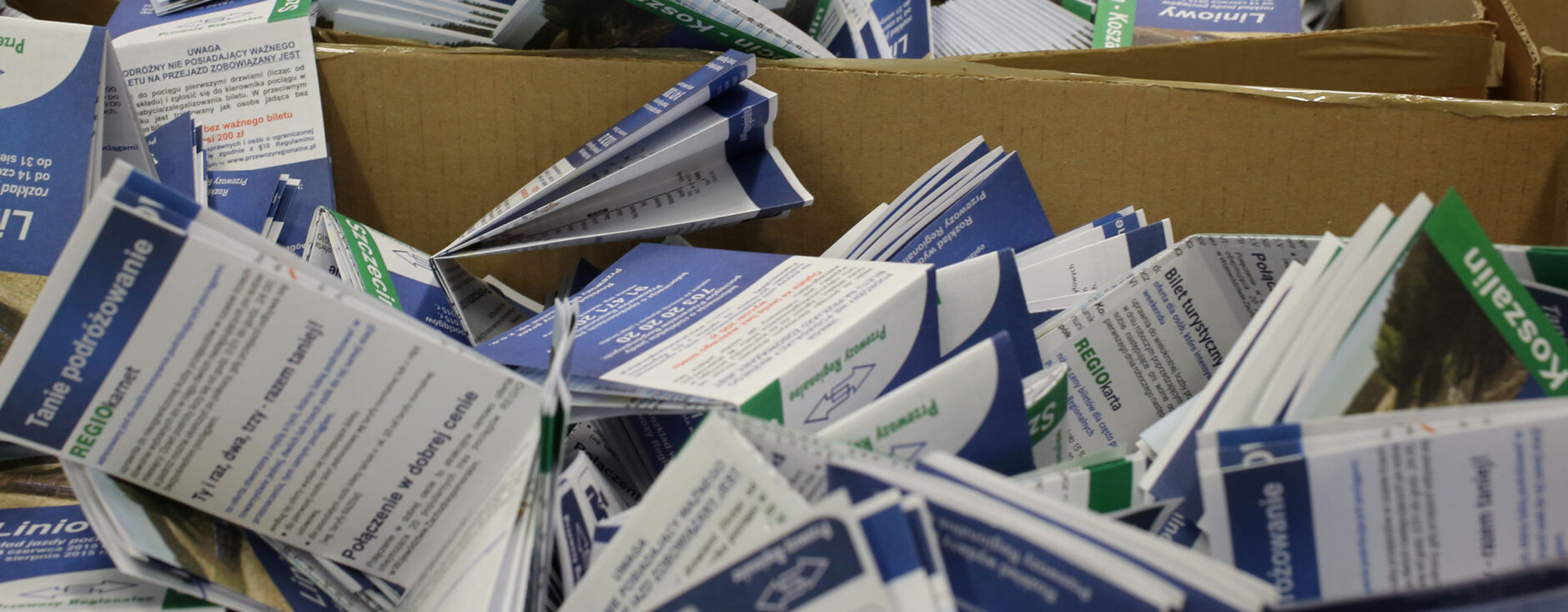Folding is a book binding process that consists in buckling the paper, allowing the sheets to be folded, e.g. in half in the case of flyers, or several times for maps. It is done on folding machines, or paper folders. The edge achieved in the folding process is called a crease or a fold, or, especially among the older printing generation, a break. In the folding process, we distinguish between two main types of fold – parallel, running in one direction, and cross – fold lines running in more than one direction (also called a French fold). Cross folds are used mainly in the production of books or multiple-page publications, while parallel folds are used primarily in the production of brochures and other advertising materials.
In the folding process, the fibre orientation of the folded material is very important. When creating parallel folds, the folds should be parallel to the direction of the fibres, or else there is a risk of the paper breaking at the fold, and the fold itself being uneven and thus not aesthetically pleasing.
At ZAPOL Group, the orientation of the paper fibres is determined at the order placement stage. A technician determines beforehand in what way the sheets will be cut for particular uses and in which direction the material fibre should run. Thanks to this, our clients can be sure that their order will be completed according to the principles of printing technology, which in turn means a high-quality and aesthetically-pleasing product.
Tell us what you need – discuss the conditions of your order:
Phone: +48 91 435 19 00
e-mail: biuro@zapol.com.pl
DOWNLOAD LIKELY TO PRINT

